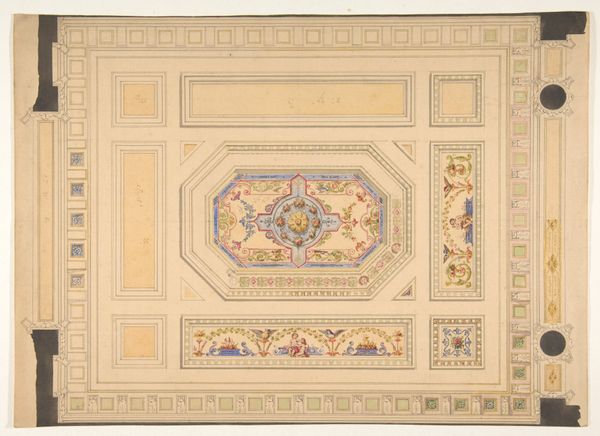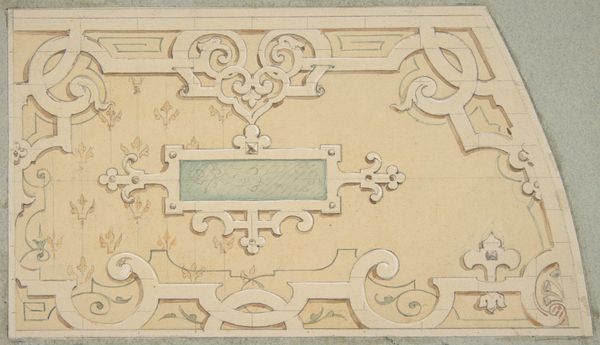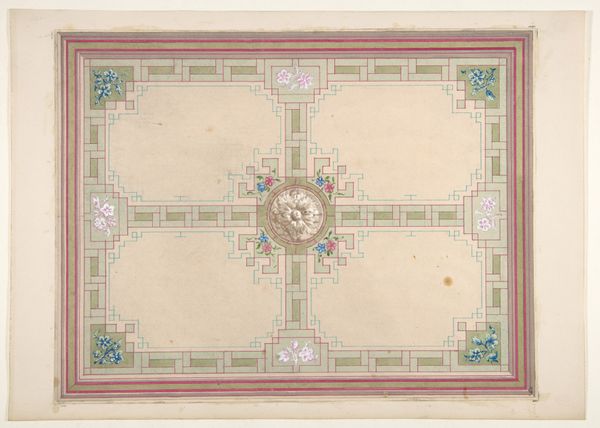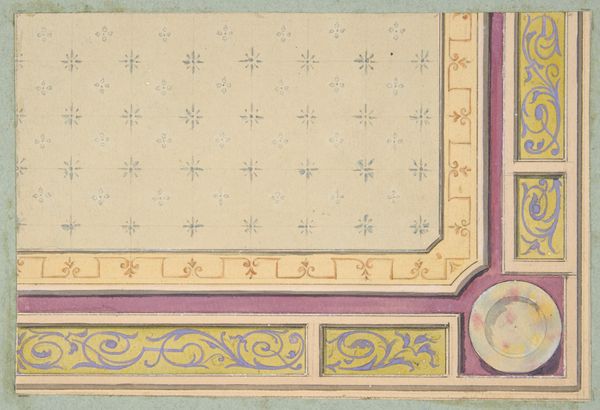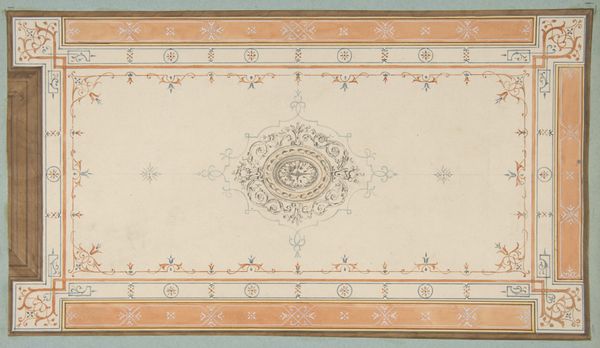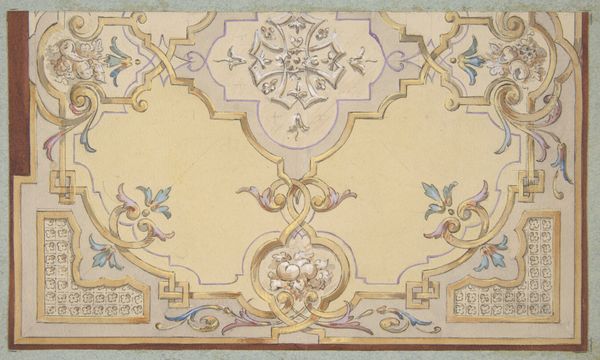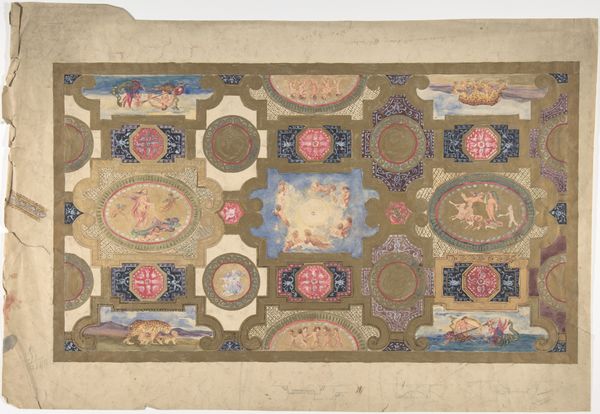
Study for a Ceiling of a Salon in the Hôtel de Mazarin 1760 - 1818
0:00
0:00
drawing, print, fresco
#
drawing
#
neoclacissism
#
allegory
# print
#
fresco
#
traditional architecture
#
geometric
#
academic-art
#
decorative-art
Dimensions: 18 1/2 x 25 1/4 in. (47 x 64.1 cm)
Copyright: Public Domain
Editor: Here we have François Joseph Bélanger’s "Study for a Ceiling of a Salon in the Hôtel de Mazarin," made sometime between 1760 and 1818. It’s a drawing, a print, and possibly related to fresco, showing a highly ornamented ceiling design. It strikes me as incredibly elaborate, yet delicate, with a dreamlike quality. What catches your eye in this piece? Curator: Oh, you’ve touched on something essential. For me, it whispers of grand ambitions and lost worlds. The Neoclassical period, you know, was so enthralled with revisiting antiquity. Here, you see the architect trying to capture the ethereal nature of frescos on paper. What do you make of all the geometric forms versus the natural ones like the clouds or cherubs? Editor: Well, I see how the strict geometry provides a kind of framework, maybe to contain, or even elevate, the more whimsical, flowing elements? Like a cage for dreams? Curator: "A cage for dreams," I like that. Absolutely! Consider that for patrons in that time, the ceiling would literally look down on them in that room—asserting ideals of harmony and order. It's like they wanted to think and socialize under a perfect version of the world, quite literally, a "ceiling" to their own earthly desires. Doesn't it make you wonder about the conversations that might have unfolded beneath it? Editor: Definitely. Thinking about those past conversations almost brings the drawing to life, it makes history feel a little more intimate, and relatable. Thanks, I’ll never look at ceiling art the same way. Curator: And I will be dreaming of "cages for dreams," wonderful. I guess art history is, ultimately, about conversations, don’t you think? With the past, and with each other.
Comments
No comments
Be the first to comment and join the conversation on the ultimate creative platform.
